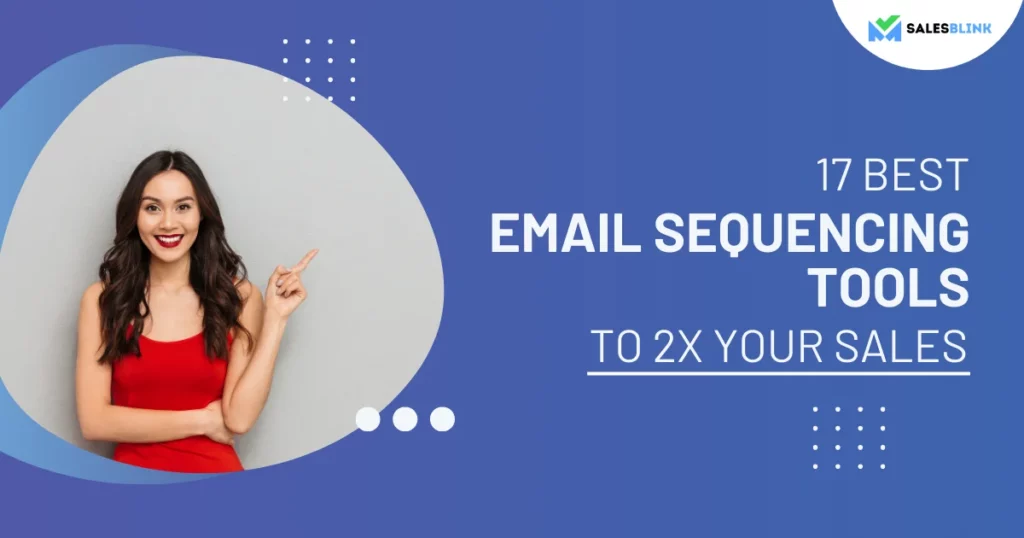10 Powerful Probing Sales Questions To Qualify Prospects
In sales, it is a must to master the art of asking probing sales questions to prospects as it will help you understand their requirements. The point is that if you don’t understand prospects’ needs, you can’t reach your quota. However, it is shocking that almost 77% of prospects feel reps cannot understand their needs.
It seems like a big reason to worry for any sales team and calls for a complete focus on learning how to ask probing questions effectively so that customers feel satisfied. If you don’t know where to start, you have landed on the right page!
Here in this blog post, we have the types of probing questions you should ask as a rep and how you should deliver them. So, keep reading till the end.
Table Of Contents
What Are Probing Sales Questions?
Probing sales questions are similar to discovery questions, but the difference is that they are more in-depth. You can get to know the issue with a discovery question and use it for your benefit, whereas to get an outcome, you need to ask probing questions. You can reach the heart of the problem by asking sales probing questions and understand the situation better. While asking probing questions, you must try to listen actively to the prospect rather than talking. You will be able to get hints on how to close the deal faster.
Types Of Probing Questions
There are 4 types of sales probing questions used commonly in business conversations with prospects, and they are the following,
1. Open-ended questions
The answers to open-ended questions are not specific, and they help provide an opportunity to the prospect to tell their story in detail. It would be best to ask specific open ended sales questions to prospects so that you don’t deviate far away from the topic. Here’s an example of an open-ended question,
What made you get into this industry?
The above question will make the prospect get into their professional history and reveal their backstory regarding choosing the particular industry. You will be able to gather a lot of information from what they have to say.
2. Loaded questions
Loaded questions aim at leading the prospect to a specific topic. They would make the prospect provide solid and precise details to answer them. In addition, these questions help in understanding what the prospect’s goals and expectations are.
For example, you may ask –
What solutions have you tried so far?
As an answer, the prospect would divulge the times when they tried different solutions in the past that didn’t give them results.
3. Close-ended questions
Close ended questions for sales usually have a specific answer in short phrases or maybe even a yes or a no. It is best to use these questions when you have to collect factual data from the prospect.
Here is an example,
Is this issue affecting other areas of the organization?
Though close-ended questions have to be a part of your conversation with a prospect, it is better to avoid asking too many of them as the other person would feel as though you are interrogating them.
4. Recall and process questions
The prospect would have to remember a specific fact to answer a recall question, while for a process question, they would have to deeply analyze a particular fact.
An example of a recall question would be,
Which lead management tool are you currently using?
An example of a process question would be,
What benefits do you expect from this solution?
While probing questions most often prove effective, there are chances of not getting good results even after using them. That is chiefly because of how you are asking the questions. If you don’t deliver them properly, they may not fetch you good results.
In the next section, we will see how to deliver probing sales questions to get maximum benefits.
How To Deliver Probing Sales Questions?
Here are a few sales strategies to deliver the questions without sounding like an intruder.
1. Treat your prospect as a person
When you meet a person for the first time, you can’t simply ask them to share their well-kept secrets with you. It would be too awkward to do so. You have to build a strong relationship with the prospect to reach the stage when they can confide in you. However, most people tend to ignore this rule when it comes to sales. Sales reps usually end up asking very personal questions and want the prospect to reveal their thoughts.
To succeed at asking the right probing questions the correct way, you should start treating your prospect as a person. It is a basic rule that most reps forget when reaching out to prospects in their excitement to close the deal.
Here’s how you should proceed,
Build a bond – You can start by building a rapport with the prospect. Begin by asking about their welfare and the easier questions first. Show genuine interest in them even if you are attempting to determine whether to take it forward or not.
Listen actively – By being an active listener, you can gather a lot of information from the prospect. At the same time, it will help you know when the prospect is feeling uncomfortable with your questions.
Add some enthusiasm – Your probing would fall flat if you mechanically ask questions to the prospect. It should not be a dry monologue. You have to seem enthusiastic and energetic and keep the conversation going from both ends.
2. Try to get to the bottom of the problem
Most prospects are not even aware of the problem they face, leave alone searching for a solution. You have to isolate the issues and help them understand them. You can ask probing questions to get to the root of the prospect’s problem and collect points that can help improve how you deliver the upcoming probing questions. It is always better to prepare yourself with a list of probing questions before getting ready for a meeting with the prospect. It will help you ask the right question at the right time and deliver it right as it is already at the back of your mind.
3. Don’t let the prospect misunderstand you
It is quite possible that when you ask a question to the prospect, they give you a completely different answer or misunderstand you and get defensive.
The truth is that what occurs in reality and what we grasp from it can be different. That is what the Ladder of Influence model says. The bottom of the ladder has the reality and fact, but prospects tend to place their interpretation, belief, and assumptions on top of it.
Misunderstandings can emerge when you deal with the pain points of the prospect. You can use the Ladder of Influence model when you feel that there has been a miscommunication. You should remove the layers of assumptions and misinterpretations and go back to reality. After doing so, you can resume asking probing questions.
You can turn to sales motivational quotes.
How To Ask Probing Sales Questions?
While the above tips were to help you not sound like an intruder, here
is how you should ask probing questions for sales to prospects,

1. Control the conversation from the start
Ask prospects questions that they cannot answer with a yes or no. You can ask them how they learned about you. It would make the prospect talk to you in detail, and you will know their requirements. Based on their needs, you have to tell them what your product or service can do for them. Highlight the features that are most relevant to them at the moment.
2. Know your competition
Every salesperson in sales has to be aware of the competition to know where their product leads and lacks. You can ask the prospect about the other companies they are comparing you with. Once you see the competition, it helps you point out their shortcomings and promote your solutions. You have to appear to be the best choice amongst your competitors to close the deal.
3. Understand the needs of the prospect
Your prospect would have met a lot of sales reps, and they would have a pre-formed idea about your tactics. They would expect to talk about your product and its features. You have to break this notion and focus on the needs of the prospect.
You may ask how you can make the sales meeting worthwhile for them or what their expectations are from the meeting.
These questions will reveal what the prospect wants to hear. They may want to know about specific features or when your solution was helpful to other companies in their industry. Chances are also that they want to know whether your offering fits into their needs or not.
You can then steer the conversation in the direction they want to.
4. Know the buying process
All organizations don’t follow the same buying process. The timeline differs from one business to another. It may be a short one for some, while it can take a couple of months for others. You can ask that to your prospect with questions like –
“When are you expecting to get a solution?” or “Can you tell me the timeline for purchasing a product like ours?”
The above questions will help you understand whether your prospect’s timeline seems to be realistic or not. Also, it is a sophisticated and non-aggressive way of asking whether the company is keen on making the purchase or not. If they haven’t given any hint about the implementation, you still have a long way to go before you close the deal.
5. Find out where the prospect went wrong previously
It is better to ask prospects what difficulties they faced the last time while finding a solution for their problem to avoid repeating the same mistakes.
Here’s how to put up the question – “What went wrong while finding a solution for the problem the last time?”
After you understand what happened in the past, you can try your best to stay away from them this time. If the prospect tells you that the decision-makers didn’t approve of the previous solution, it is a signal to change your approach and reach out to the decision-makers differently. You have to understand the priorities and challenges of decision-makers and show them how your product or service can be helpful.
6. Search for the decision-maker
Ensure that the prospect you are persuading is the decision-maker, or you have to give the demo once again. Having a conversation with the right person from the beginning would not make your efforts go futile. So, find out whether you are interacting with the decision-maker or not.
You, however, have to ask that tactfully without hurting the person in concern. You may ask, “Who will use the solution?” or “Who will approve the final deal?”
You will get your answer, and it will take you a step closer to closing the deal. It would also be possible to gauge how complicated the deal will be when there is the need for multiple approvals.
7. Ask about the current challenges
The fact that they are selling to you is in itself a signal that they are facing certain challenges. You may ask them about it this way – “What is the problem you face with your current process?”
You can further ask them to elaborate on it. It will help you understand the problem in-depth rather than just the surface-level issues.
Ask the right questions, listen carefully, and then ask more questions to understand the underlying challenges. You can come up with additional solutions to close deals faster once you recognize the issues faced by the prospect.
8. Find out the priorities of the prospect
After understanding the problem, you must ask qualifying questions like “What would give you the maximum relief at present?”. They will be hopeful when they know that there is a better solution than what they currently use. Asking them their immediate desires will equip you with the knowledge to tailor the deal as per their needs and close the deal.
9. Qualify them
If the product or service is not a good fit for the prospect, it can be a huge problem. Therefore, it is more important to ask qualifying questions to the prospect.
You may ask – “What are the other tools/software you currently use and want to integrate with ours?”
Or “What is your budget for finding a solution to your problem?”
Asking both the above is essential to qualify the lead, but don’t begin the conversation with these questions. You can even ask when the prospect purchased their last solution similar to yours if they made the purchase recently. It means that they have an idea about the process, but if they say it was ten years ago, you have to put in more effort in helping them reach the finale.
10. Ask for a sale
Once you have presented the demo and addressed prospects’ objections, you should not wait to ask for a sale. You can do so in a refined manner –
“As you now know what our product offers and believe that it fits into your needs, how should we proceed?”
From the answer, you will find out whether the prospect is a serious buyer or not. If they say that they have other contracts in the sales pipeline, you can understand that you won’t be able to close the deal, but if the prospect tells you that they need the approval of other stakeholders, it means that the deal is on.
Go Ahead & Master Your Probing Skills
Make sure you begin the conversation by asking specific probing sales questions to prospects in a non-intruding manner. The way you ask questions matters a lot and decides the fate of your deal. They can help you understand the prospect’s situation and find out the actual difficulties they face before you pitch your product or service to them.
So get ready to sharpen your skills with our inputs and enjoy the outcome.
FAQs
Probing sales questions are like discovery questions, but the difference is that they are more in-depth. You can get to know the issue with a discovery question, whereas asking probing questions fetches a better outcome.
Loaded questions aim at leading the prospect to a specific topic. They would make the prospect provide solid and precise details to answer them. And that works in favor of reps.
The answers to open-ended questions are not specific, and they provide an opportunity to the prospect to narrate a detailed story. It would be best to ask specific questions to avoid deviating from the topic.







